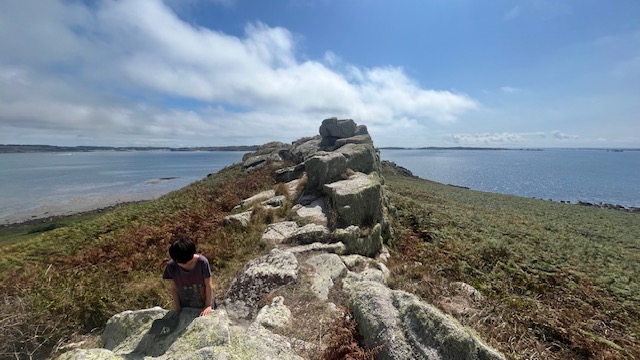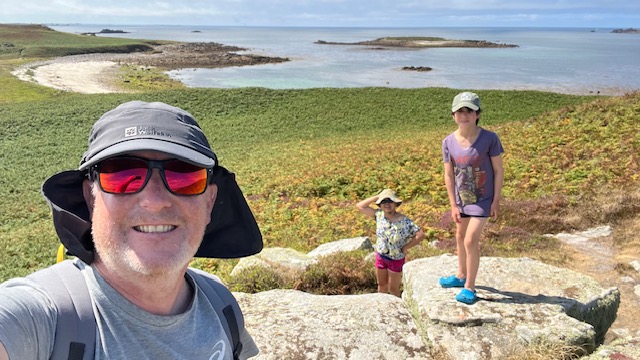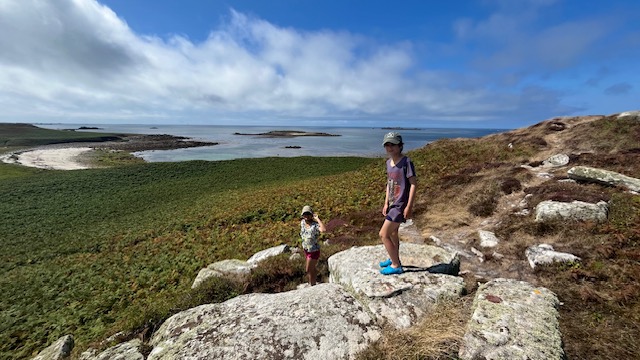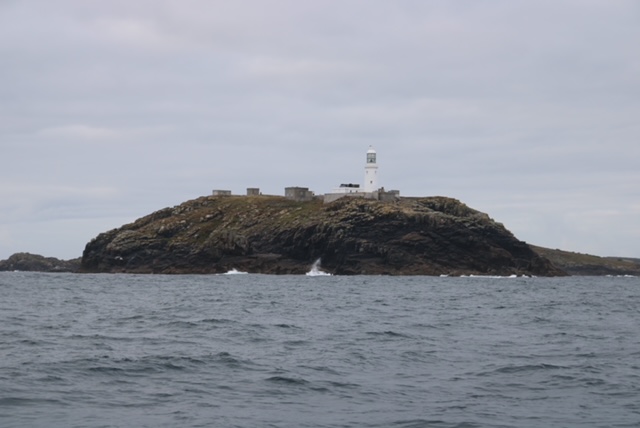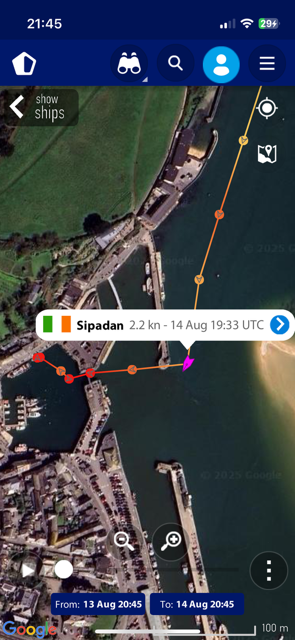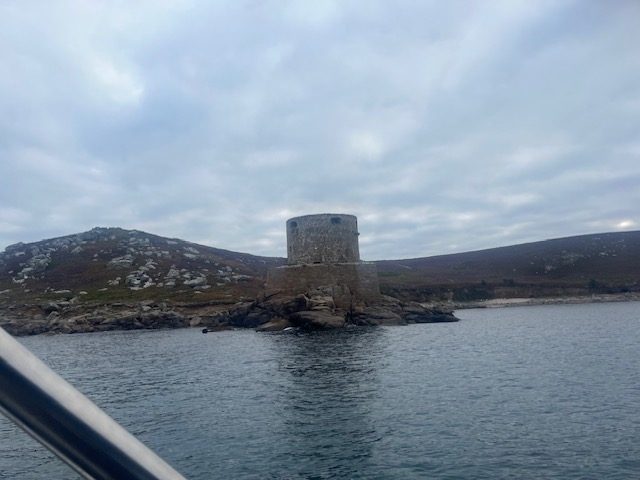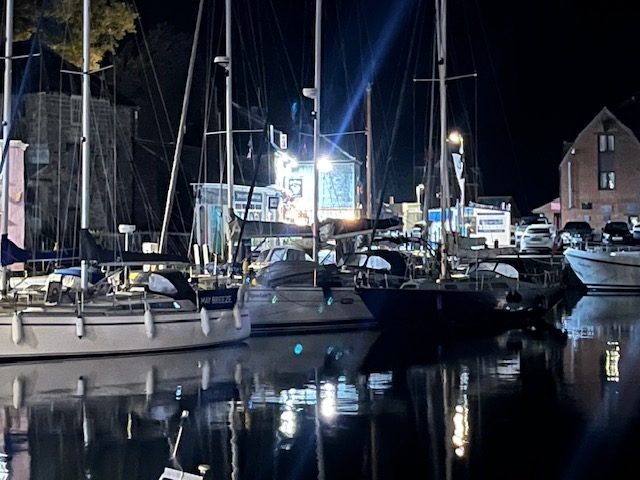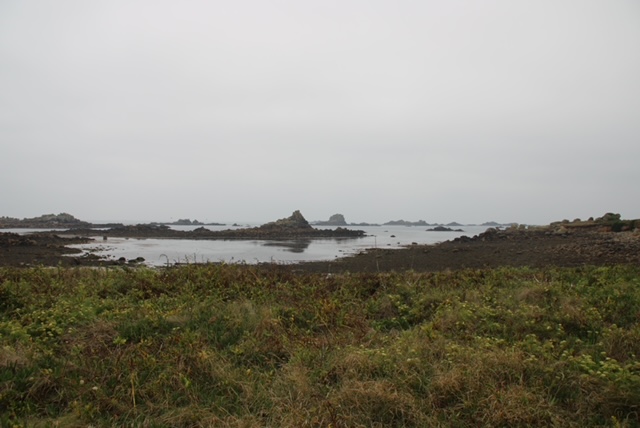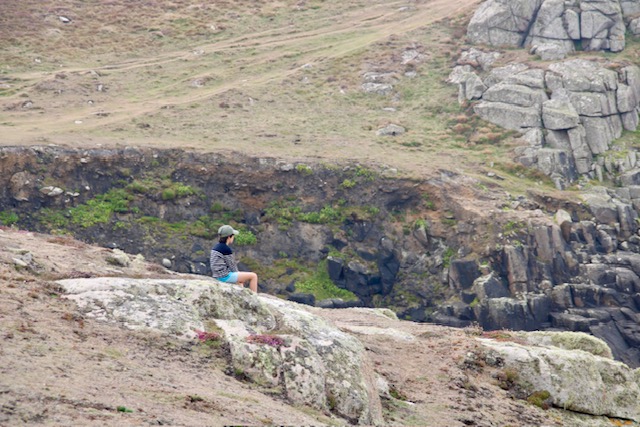Once we found a safer position with decent sand underneath, Green Bay revealed itself to be just idyllic. The water was crystal clear, the holding was good, and the view across to the other islands was spectacular. We went ashore for a walk around Bryher, but first things first—we got a lovely seafood meal at Island Fish, sitting in the sunshine in their beautiful gardens. There’s something about eating fresh fish after a few days of sailing that just hits differently.
We then walked around the island, taking in the dramatic western coast at Hell Bay—you can see why it earned that name, with the full force of the Atlantic hammering into the rocky shore. We stopped for coffee and cakes at the rather incongruously named Hell Bay Hotel, which despite its ominous title was actually lovely and welcoming. The contrast between the wild coast outside and the civilized comfort inside was quite something.
The following morning we took the tender out to Samson Island, one of the true desert islands of the archipelago. The ruins of the abandoned villages scattered across the island gave it a haunting, otherworldly feel—families lived here until the mid-1800s before the islands were finally evacuated. The walk to the top was well worth the effort, rewarded with a 360-degree panorama of the entire archipelago spread out below us like a map come to life.
Most interesting were the fringing reefs west of Samson, a veritable graveyard of ships. This is where Admiral Cloudesley Shovell’s fleet came to grief in 1707, causing the loss of four ships and the deaths of some 2,000 sailors—a disaster that finally brought to a head the problem of calculating longitude at sea. Standing there looking at those treacherous rocks, you could understand exactly how even an experienced fleet could be lost on a dark night.
We then took the tender from Samson across New Grimsby Sound to Tresco, though “took the tender” is perhaps overstating it. Thanks to the spring low tides, much of the crossing involved me dragging Su Yin and our 11-year-old Tomás in the dinghy through knee-deep water—not quite the dignified arrival we’d envisioned, but it added to the adventure. Once we finally made it to Tresco, we walked over to the other side of the island to Ruin Beach Café, passing Jamie Oliver and family who cycled by us—clearly we weren’t the only ones who appreciated the quieter corners of the Scillies.
We then headed back to the boat to prepare for an early start the next day—we had a big passage ahead of us to Padstow, some 65 miles to the northeast. The next morning we raised anchor at first light and headed through New Grimsby Sound, threading our way past the rocks and islands as the sun came up behind us.
Initially we were making decent progress, clocking 7 knots in light winds under sail. We had considerable assist from strong currents—the tidal streams around the Scillies can be ferocious—but what the tide giveth, the tide taketh away, and eventually those helpful currents turned against us, making for frustratingly slow progress. After a long sail, the pressure was on to make Padstow in time for the opening of the harbour tidal gate at 8pm. Miss that and we’d be stuck outside until the next tide window.
Once we established radio contact, the harbour master was very helpful and talked us in. We ended up rafted outside another boat on the northwest side of the harbour—not the most private berth, but we were just grateful to be inside and secured for the night. We got some nice pizza at one of the many local restaurants—Padstow has really embraced its foodie reputation—before retiring for the night, ready for the arrival of the crew for the return passage the next day.
